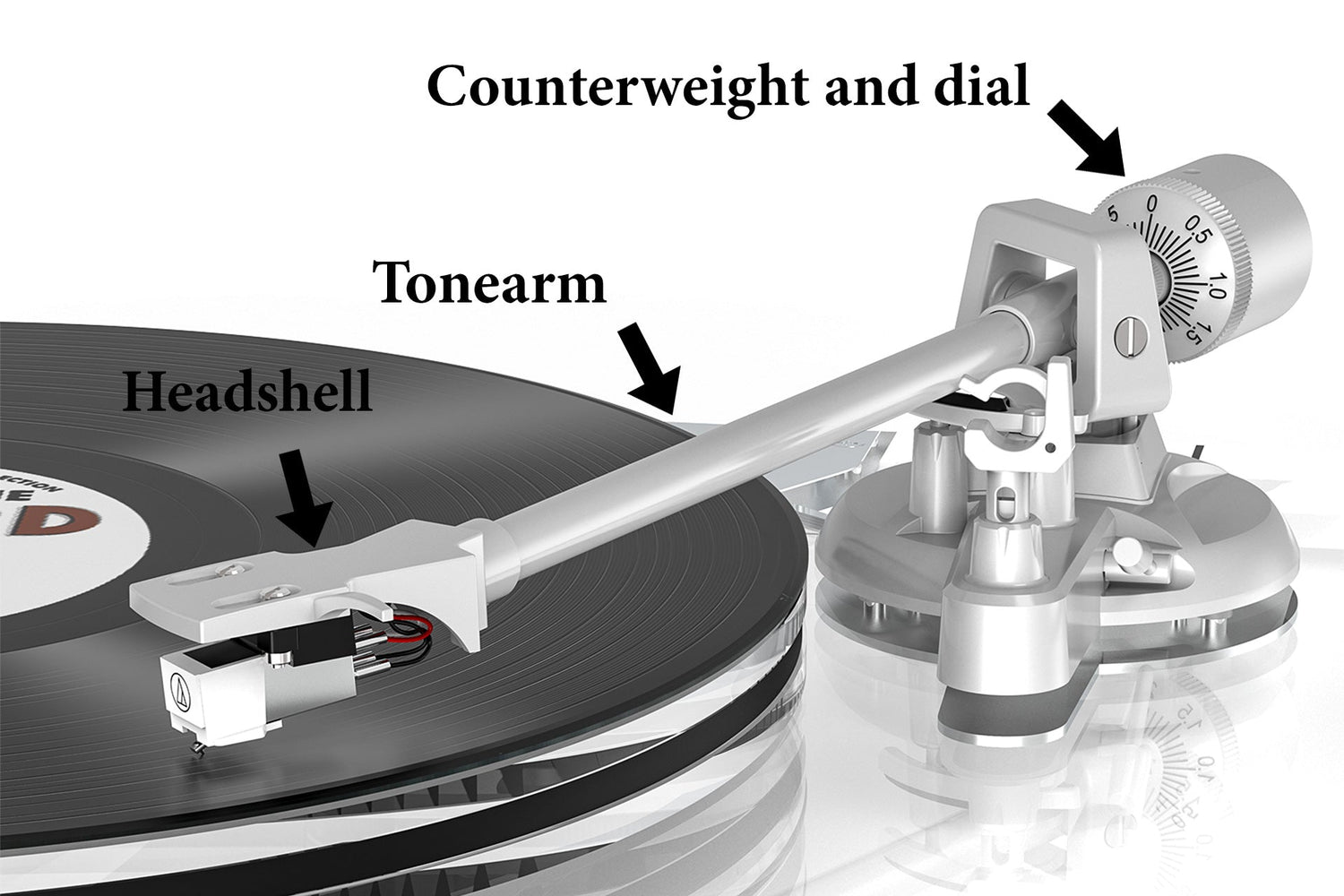If you’re into vinyl, you already know how a cartridge, platter, or even your phono preamp can change the way music sounds.
But there’s one often-overlooked component that quietly shapes every note: the tonearm.
At first glance, a tonearm seems simple. It holds the cartridge. It swings over the record. That’s it, right?
Not quite.
The material your tonearm is made of affects not only how your cartridge tracks but also how your music feels. It influences resonance, clarity, warmth, and even bass tightness.
Let’s break down why tonearm material matters more than you might think.
Tonearm 101: Why Material Matters
The tonearm serves three main roles:
- Support: It physically holds the cartridge and allows it to move across the record’s grooves.
- Tracking: It must follow the groove accurately with minimal resistance or deviation.
- Isolation: It helps isolate the stylus from unwanted vibrations and resonance.
- Each of these depends heavily on material characteristics like:
- Rigidity – Prevents flexing and preserves tracking accuracy
- Mass – Affects resonance frequency and cartridge compatibility
- Damping ability – Controls how vibrations are absorbed or transmitted
- Internal resonance – Impacts how coloration or distortion enters your sound
- So no, it’s not just a stick that holds your cartridge.
Material Showdown: Pros & Cons at a Glance
| Material | Pros | Cons | Sound Tendency |
|---|---|---|---|
| Plastic / Zinc Alloy | Inexpensive, easy to manufacture | Resonates easily, low precision | Flat, noisy, unfocused |
| Aluminum | Rigid, stable, affordable | Can transmit unwanted resonance | Balanced, neutral |
| Carbon Fiber | Lightweight, strong, excellent damping | Higher cost, harder to manufacture | Clear, tight, refined |
| Wood / Exotic | Visually unique, natural damping | Costly, inconsistent, fragile | Warm, organic, colored |
TL;DR: If you're looking for high resolution and minimal distortion, carbon fiber leads the pack. Aluminum is a solid all-rounder. Plastic is best avoided beyond entry-level setups.
Real-World Sound: What You’ll Hear
Carbon Fiber:
Carbon fiber tonearms are often praised for their exceptional stiffness-to-weight ratio and excellent damping properties. Users frequently report a sound that’s noticeably clearer and more detailed, with tight and controlled bass, as well as reduced background noise. The reduction in unwanted resonance means the music feels more "alive," with instruments having better separation and dynamics. However, some listeners note that carbon fiber arms can sometimes sound a bit “sterile” or clinical, especially if paired with certain cartridges or records, so matching components is key.
Aluminum:
Aluminum tonearms strike a balance between affordability and performance. They are rigid and stable but tend to transmit more mechanical resonance compared to carbon fiber. This can result in a slightly more “metallic” or brighter tonal character. That said, many users appreciate aluminum for its reliability and neutral presentation. It pairs well with a wide range of cartridges and genres, making it a versatile all-rounder.
Wood / Exotic Materials:
Wood tonearms add a warm, rich, and organic texture to the music. They naturally absorb vibrations and can smooth out harshness in recordings, making vocals and acoustic instruments particularly pleasant. But because of variability in wood density and structure, the sound can sometimes lack the precision or clarity found in synthetic materials. For audiophiles who prefer a "musical" rather than "analytical" experience, wood can be very appealing.
Plastic / Zinc Alloy:
Generally found in entry-level or budget turntables, these materials tend to resonate more, adding unwanted noise and distortion. The sound is often described as flat, dull, or unfocused. While not recommended for serious listening, they serve as a starting point for newcomers to vinyl.
Choosing the Right One: It’s About Balance
Picking a tonearm material isn’t just about chasing the “best” — it’s about finding the right match for your cartridge, turntable setup, and personal taste.
Beginners and Budget-Conscious Users: Aluminum tonearms provide solid performance without breaking the bank. You get decent rigidity and a neutral sound that works well across most records and cartridges.
Serious audiophiles often opt for carbon fiber, seeking the ultimate in clarity, detail, and control. It’s especially recommended if you’re running high-compliance cartridges that benefit from minimal resonance.
Warmth Seekers and Traditionalists: Wood and exotic materials can add character and warmth, ideal for genres like jazz, classical, or vocal-heavy music, where organic sound textures shine.
Experimenters and DIYers: Hybrid tonearms (combining materials like carbon fiber and aluminum, or wood) offer creative opportunities to balance stiffness and damping for customized sound profiles.









Leave a comment
All comments are moderated before being published.
This site is protected by hCaptcha and the hCaptcha Privacy Policy and Terms of Service apply.